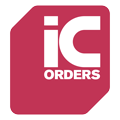Integrated circuits, also known as microchips or ICs, are at the heart of modern electronic devices. They are the building blocks that make up our computers, smartphones, and countless other devices. This article will delve into the world of integrated circuits, exploring their history, how they work, their types, and their applications.
The History of Integrated Circuits
The concept of an integrated circuit was first proposed by Geoffrey Dummer, a British radar scientist, in 1952. However, it was Jack Kilby of Texas Instruments and Robert Noyce of Fairchild Semiconductor who independently developed the first practical integrated circuits in the late 1950s.
Kilby’s design was a hybrid integrated circuit, combining individual components on a single substrate. Noyce’s design, on the other hand, was a monolithic integrated circuit, where all components were made from a single piece of silicon. Noyce’s design became the standard for modern integrated circuits.
Evolution of Integrated Circuits
Since their inception, integrated circuits have undergone significant evolution. The first generation of integrated circuits, known as Small-Scale Integration (SSI), contained only a few transistors. As technology advanced, Medium-Scale Integration (MSI) circuits, containing hundreds of transistors, were developed.
Large-Scale Integration (LSI) circuits, containing thousands of transistors, followed. Today, we have Very Large-Scale Integration (VLSI) circuits, which can contain billions of transistors. This evolution has led to the miniaturisation of electronic devices and a significant increase in their processing power.
How Integrated Circuits Work
Integrated circuits are made up of several components, including transistors, resistors, and capacitors, all fabricated on a single piece of semiconductor material, usually silicon. These components are interconnected to form an electronic circuit.
The transistors in an integrated circuit act as electronic switches. By controlling the voltage applied to the transistor, it can be turned on or off, allowing or blocking the flow of current. This on-off action is the basis of binary code, the language of computers.
The Fabrication Process
The fabrication of integrated circuits is a complex process that involves several steps. It starts with the purification of silicon, which is then grown into a single-crystal cylindrical ingot. This ingot is sliced into thin wafers, which are then polished to a mirror finish.
The wafers are coated with a light-sensitive material, and a pattern is etched onto them using a process called photolithography. The patterned wafer is then subjected to various chemical and heat treatments to form the components of the integrated circuit. The final step is the testing and packaging of the completed chip.
Types of Integrated Circuits
There are several types of integrated circuits, each designed for a specific purpose. The most common types include digital circuits, analogue circuits, and mixed-signal circuits.
Digital circuits, used in computers and digital devices, process binary data. They include microprocessors, memory chips, and logic gates. Analogue circuits, on the other hand, process continuous signals and are used in devices like radios and audio amplifiers. Mixed-signal circuits combine both digital and analogue components and are used in devices like mobile phones and digital cameras.
Specialised Integrated Circuits
There are also specialised integrated circuits designed for specific applications. These include Application-Specific Integrated Circuits (ASICs), which are custom-designed for a particular use, and Programmable Logic Devices (PLDs), which can be programmed to perform a variety of functions.
System-on-a-Chip (SoC) is another type of specialised integrated circuit that integrates all components of a computer or other system on a single chip. This includes the processor, memory, input/output ports, and secondary storage.
Applications of Integrated Circuits
Integrated circuits have a wide range of applications. They are used in virtually all electronic devices, from simple calculators to complex supercomputers.
In the field of computing, integrated circuits are used in processors, memory modules, and graphics cards. In telecommunications, they are used in mobile phones, satellite communication systems, and network routers. In consumer electronics, they are used in televisions, music players, and gaming consoles.
Emerging Applications
As technology continues to advance, new applications for integrated circuits are emerging. They are being used in the development of wearable technology, smart homes, and Internet of Things (IoT) devices. In the field of medicine, integrated circuits are being used in implantable medical devices and biomedical sensors.
With the advent of artificial intelligence and machine learning, integrated circuits are playing a crucial role in the development of neural networks and autonomous vehicles. As we continue to push the boundaries of technology, the importance of integrated circuits in our lives is only set to increase.
As you’ve seen, integrated circuits are pivotal in the evolution of technology, and their applications are expanding every day. Whether you’re innovating in wearable tech, smart homes, IoT, or any other field, having the right components at your fingertips is essential. With over 12 years of experience in the electronic component market, IC Orders is your go-to independent distributor to meet these needs. We understand the intricacies of sourcing the exact part numbers for your projects and are dedicated to ensuring your Bill of Materials is complete. Contact Us for A Quote Today and let us help you stay ahead in the ever-growing landscape of integrated circuits.
